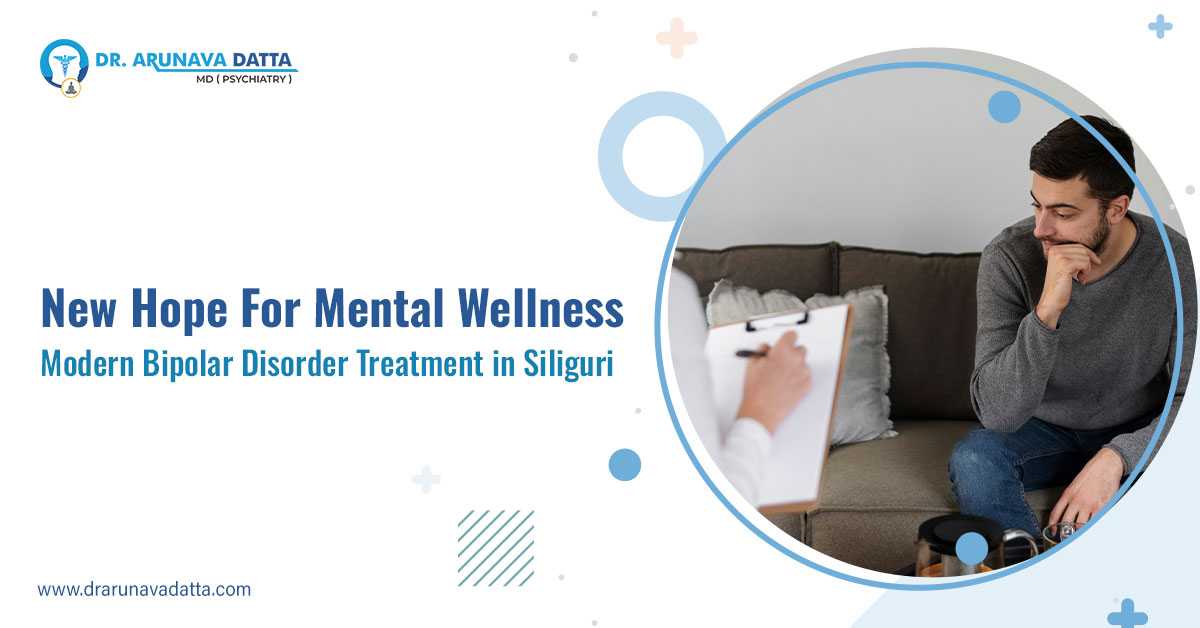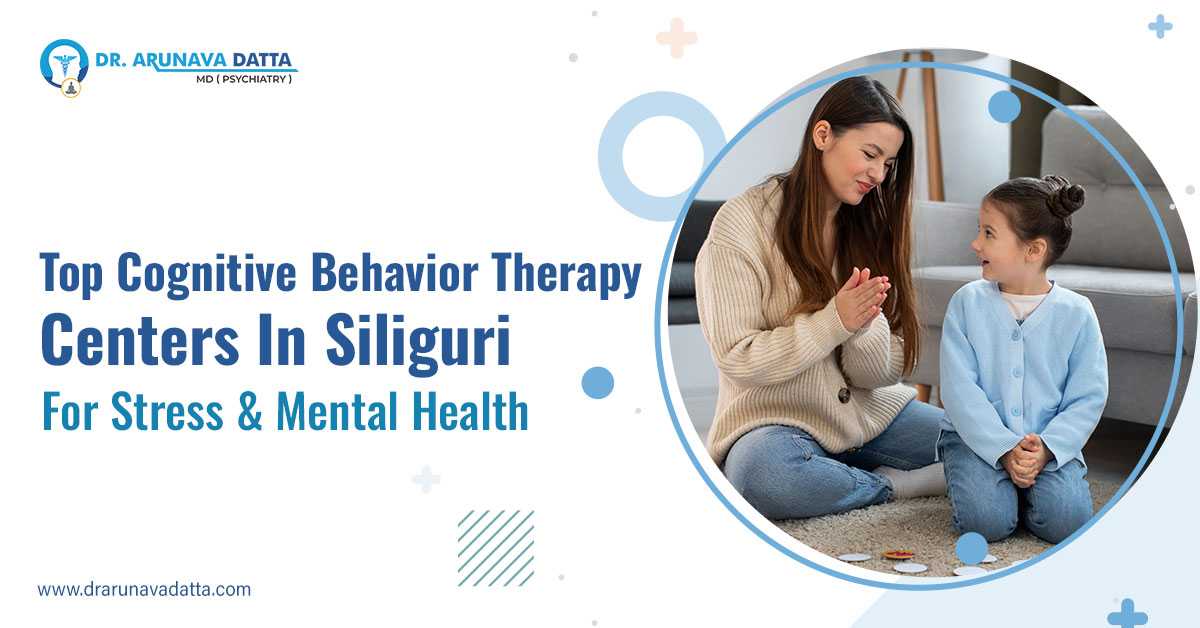It has been discussed for decades as though it were a single, homogenous disease. However, mental health experts now recognize depression as a spectrum disorder, which encompasses a variety of experiences, intensities, and symptoms.
It is easier to recognize that each person's experience with depression is unique when we view it as a spectrum. It serves as a reminder that mental health is complicated, that discomfort can manifest in a variety of ways, and that healing and support must be equally individualized.
You might consult the top psychiatrist for depression spectrum disorder in Siliguri City or near you. This blog willshare the definition of depression as a spectrum condition, its various manifestations, and the importance of this knowledge.
What Does “Spectrum Disorder” Mean?
Simply said, the term "spectrum" refers to an endless range of possibilities that merge into one another. When we refer to anything as a spectrum disorder, we are indicating that it is not a single, fixed disease but rather can manifest in a variety of ways and severity levels.
Here, autism is a well-known example of a spectrum condition. People with autism may show a wide range of skills, difficulties, and symptoms. In a similar vein, depression can vary from intense, life-altering major depressive episodes to mild, situational sadness.
This perspective on depression dispels the mythical distinction between those who are "clinically depressed" and those who are not. Rather, it considers that a large number of people suffer from depressed symptoms, which change over time in terms of their impact, intensity, and length.
Overview of Diagnostic View and Possible Causes
In the past, mental health diagnoses have been classified as either meeting the criteria for major depressive disorder (MDD) or not. This method helps doctors diagnose and plan treatments, but it may fail to recognize many people who are suffering.
A more comprehensive and sympathetic perspective on depression is provided by the spectrum model. It implies that there is a continuum of depressive experiences, including:
- Symptoms of mild depression include feeling "off," lacking drive, or experiencing a slight decline in everyday delight.
- Prolonged sense of loneliness, exhaustion, irregular sleep patterns, and self-doubt that interfere with day-to-day functioning.
- Extreme hopelessness, difficulty performing daily duties, and potential suicidal thoughts are signs of severe depression.
- Long-term depression that doesn't go away with counseling or medicine is known as chronic or treatment-resistant depression.
Two people who are both classified as "depressed" may have quite different experiences; one may operate normally yet feel always empty, while the other may find it difficult to leave their beds. This model helps explain why. You might receive optimal depression treatment in Siliguri or near you from a highly reputed psychiatrist.
A complex interplay of biological, psychological, and social elements shapes depression. Each person has a different combination of these factors that combine to form their own mental health profile. The following are some of the main causes of depression's variation in shape and intensity:
1.Genetic and Biological Factors
Some people have mental disorders at birth. Additionally, brain chemistry is involved; mood and motivation are influenced by neurotransmitters such as serotonin, dopamine, and norepinephrine. These biological aspects, however, do not provide a complete picture.
2.The Impact of the Environment and Society
Depression can result from a variety of factors, including trauma, ongoing conflict, financial strain, isolation, and chronic stress. A person may progress farther along the depression spectrum the longer or more severe these stressors are.
3.Personality and Coping Styles
Depressive symptoms may be more likely to appear in those who tend to repress their demands, internalize their emotions, or have perfectionist standards. Stress in life interacts with personality traits to influence mental health.
4.Unexpected Events and Transitions in Life
Mild to severe depressive episodes might be caused by loss, relationship difficulties, health problems, or significant life transitions. As things get better for some, these episodes go away; for others, they persist or come back.
Know the Multiple Faces of Depression
You must know that not all depression manifests as sadness. Actually, itoften goes unnoticed in favor of other feelings or actions. We become more aware of these various "faces" of depression when we view it as a spectrum.
1. Depression that is Mild or Subclinical
Even if a person does not fully fit the criteria for a depressive condition, they may nevertheless often have bad emotions, lack ambition, or have trouble enjoying life. People usually ignore this type because they believe they should "shake it off”.
2. Situational Depression
Situational depression is typically transient and is caused by a particular life event, such as a breakup, job stress, or loss. However, the symptoms can be as severe as those of clinical depression when a person's ability to cope is overwhelmed.
3. Persistent Depressive Disorder, or Dysthymia
Despite appearing functioning, people with dysthymia may experience persistent fatigue, pessimism, or emotional flatness. It can be mild to moderate, but PDD is chronic.
4. Major Depressive Disorder
Deep sadness, lack of interest in activities, changes in sleep or food, feelings of worthlessness, and occasionally suicidal thoughts are some of the severe symptoms that interfere with day-to-day functioning. Major depression may be chronic or episodic, meaning it occurs periodically.
5. Atypical Depression
Atypical depression may manifest as increased hunger, oversleeping, heightened sensitivity to rejection, and mood enhancement in reaction to happy occurrences, in contrast to the typical symptoms of sadness and withdrawal.
6. High-Functioning Depression
Among the least known forms of depression is this one. People with high-functioning depression suffer in secret from feelings of emptiness, worry, or fatigue.
When you know these differences enables us to view depression as a variety of human struggles rather than as a single condition.
A spectrum disease cannot be treated with a one-size-fits-all strategy. Therapy may be the most beneficial option for some people, while medication, lifestyle modifications, or social support may be necessary for others.
Final Words
Getting enough sleep, eating a healthy diet, and exercising regularly can all greatly boost energy and happiness. These are the cornerstones of mental wellness at all levels. Get expert advice on depression and recover optimally.
A culture change is also necessary to see depression as a spectrum. Because peopledon't believe they're "depressed enough" to need help, they often step back when it comes to seeing a psychiatrist. Speak with your doctor for effective depression spectrum disorder in Siliguri.




